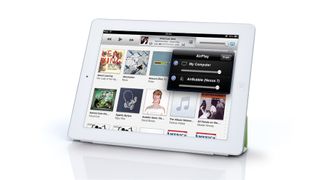
The digital music revolution freed our tape-based, CD-locked, vinyl-etched tracks, so thousands of songs could travel with us. The revolution had its setbacks though, as DRM attempted to trap tunes in systems and devices you had no control over. Thankfully the world saw sense and turned away from the precipice, and music remained largely DRM-free.
The question is, what's the best way to enjoy your music? Whether you're sitting at your gaming PC, relaxing in the living room or out and about, the key is having easy access to your entire collection and being able to enjoy it to its fullest. To that end, let's take a look at how we can enable server-based, multi-room, multi-speaker, multi-user streaming audio around your home and beyond.
Enjoying your music shouldn't lock you in to any one company's products, so we'll us your own network, PCs, phones and tablets (with a few apps and downloads) to build the most flexible system we can.
The ubiquity of MP3 audio is a real strength, but the downside is that it's so widely supported it can be hard to narrow down a solution that will cover all your requirements. We had real trouble finding a one-size-fits-all system, so we ended up with two. The good news is that the split is entirely straightforward - one solution for home enjoyment and another for when you're on the move, both of which work together seamlessly.
The other element is flexibility. If you want to create a home-straddling, multi-room audio environment then you can. If you just want to create a standalone high-end audio digital hi-fi system then we can take care of that too - and this is where we're going to start.
Were we just praising digital music? I hope not, because we're going to bad-mouth it now. It's a sad fact that in the rush to digital, many people lost sight of what should be most important: audio quality. It's understandable, though - you're given a state-of-the-art gadget and you want as many tunes on there as possible, so you crank up the compression and end up with music tracks that sound fine on tiny headphones, but utterly lacking on capable speakers.
MP3 is almost two decades old, and was only originally intended to store modest-quality audio. One issue is that encoders can be very inconsistent, so even high bit-rate MP3s created by a poor encoder will lose quality. If you're sticking with MP3, make sure you use a LAME-based encoder, as it has been shown to offer the best results.
Get daily insight, inspiration and deals in your inbox
Get the hottest deals available in your inbox plus news, reviews, opinion, analysis and more from the TechRadar team.
If you're encoding, it's important to understand where your audio is coming from. You might be using the best quality encoder, but it's all for nought if the original source was a single-channel 8-bit 22kHz YouTube source. Typically most people will be getting audio from a CD rip, which is 16-bit two-channel audio at 44kHz. DVD audio never really took off, but does support 24-bit, six-channel audio at 96kHz, or two channels at 192kHz, which is the best source.
Most people say they can't tell the difference between a CD and a good 192kbps MP3. This depends on your ears and the kit you're using to enjoy the track, but there's a strong argument against using anything bigger. Even professional DJs tend to be happy with 320kbps MP3 files for pro rigs. All we can say is that for archival quality, you're best using a lossless format. If you need to save space on portable devices, convert to AAC at 192kbps.
If you're looking for a flexible CD ripper/audio converter, we'd suggest fre:ac. It supports all of the mentioned formats, supports CDDB/freedb with ID3v2 tagging, and is open source, so you can get ripping to your heart's content.
